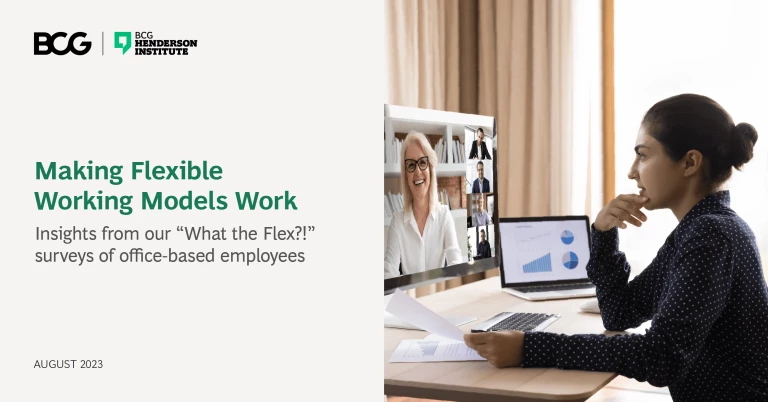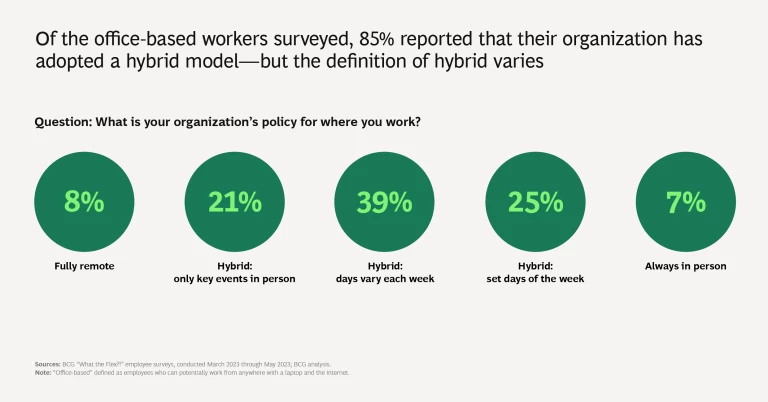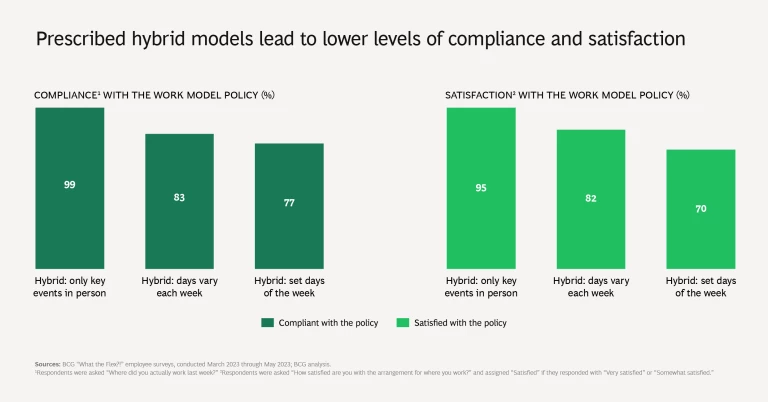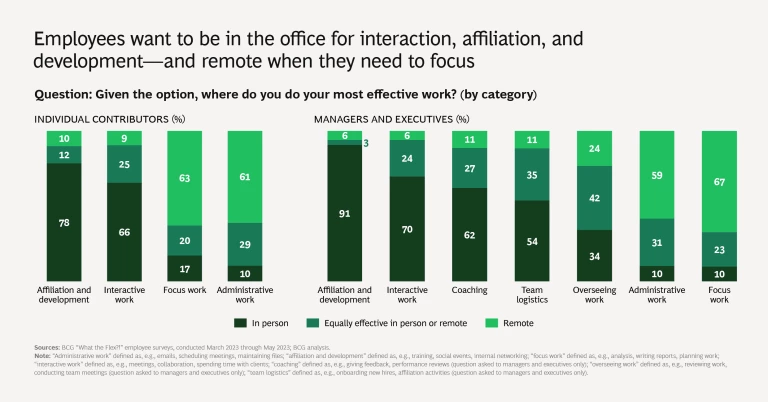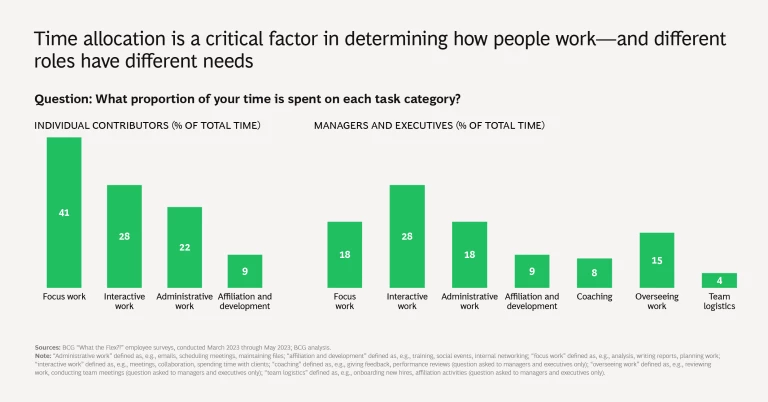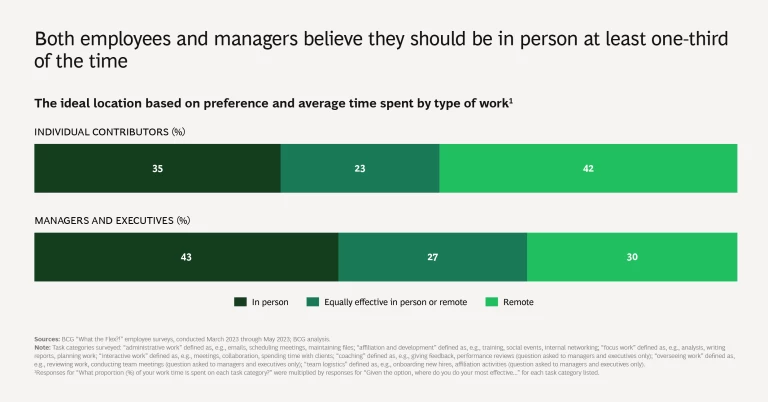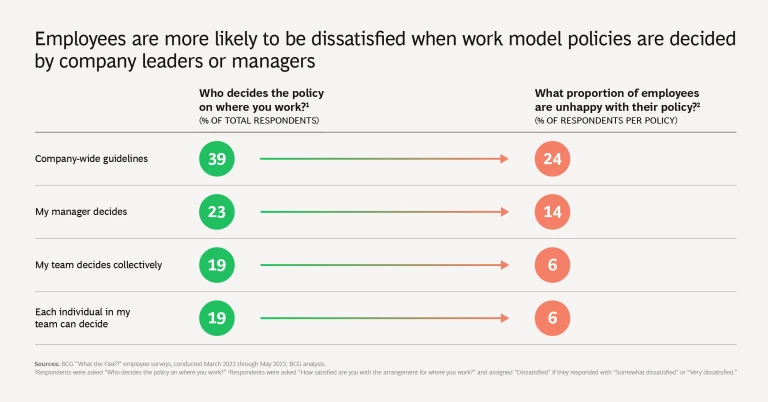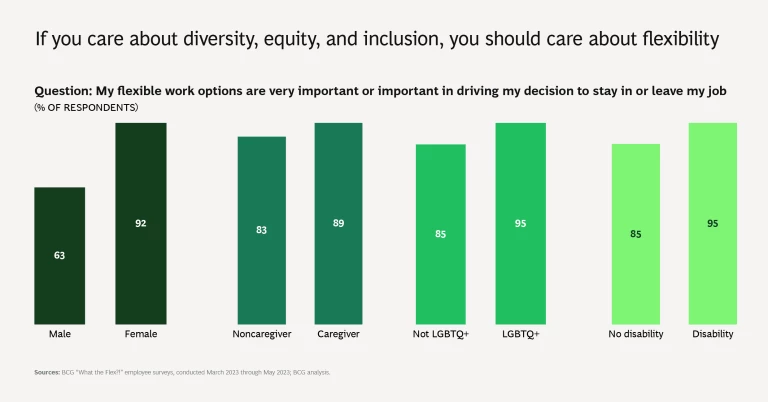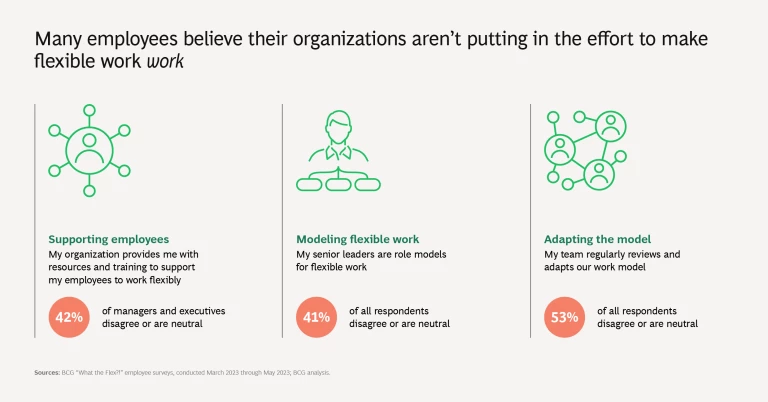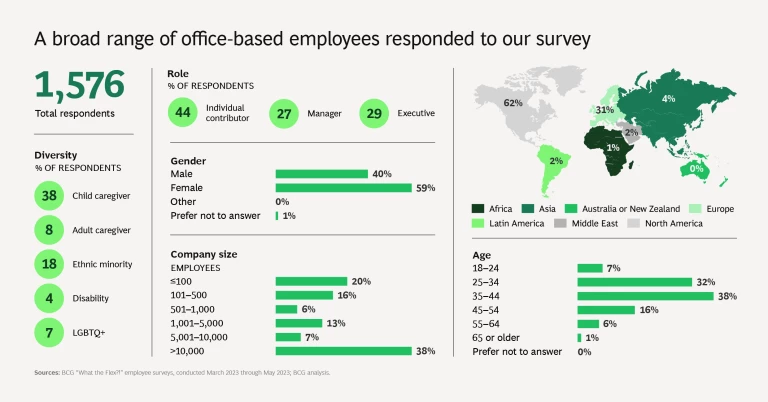The pandemic broadened the aperture on flexibility, unlocking unprecedented shifts in where, when, and how we work. For a significant subset of employees—largely those who are office-based and whose work can be done anywhere with a laptop and the internet—flexibility became standard practice. Moreover, it has become an expectation that workers have of their employers: an expectation that is currently being challenged by a wave of return-to-office policies.
The question “What is the right work model policy?” looms large for leaders today. But that is not the right question to be asking. The right one is “How do we construct work to optimize both productivity and joy?” And the answer to that question can be found only through a deep understanding of how people do their best work—across all categories of responsibilities and tasks. This is the key finding from our surveys of more than 1,500 global office-based workers’ behaviors and preferences, which complement our research on how to make work work better for deskless workers .
Employees want flexibility for many reasons. They need to balance personal responsibilities such as caregiving. They also need to concentrate on work tasks that open-concept offices can complicate. At the same time, they need to gather in person with colleagues to do more collaborative and creative work because they crave community and opportunities for development. And at the highest level, all workers see flexibility as an indicator of a trusting culture .
So yes, there are multiple reasons employees want flexibility and most are ready to quit if it isn’t offered. But the reality of how to deliver flexible work effectively is much more nuanced.
Flexible Work Doesn’t Mean Remote Work
Flexible work has a definition problem. All too often, it is conflated with fully remote work, but this is not what’s happening in most organizations. The majority of our respondents reported working in a hybrid model. And even in fully remote models, one in seven employees are choosing to come into the office on some days.
Conflating prescribed hybrid models with flexibility is also misguided. The employees who told us they work in hybrid models with set office days do not feel like they have flexibility. In fact, only 28% of them said they feel like they have significant flexibility in where they work, compared with 100% of employees working in less prescribed hybrid models.
One-Size-Fits-All Work Policies Don’t Work
When employees come into the office, they want to know that their time is being used meaningfully. For example, respondents were eight times more likely to want to work in person for affiliation and development compared with doing focus work (such as analysis, emails, and writing reports) and administrative tasks; they often perceive the latter two categories to be more efficient when carried out remotely.
When employees come into the office, they want to know that their time is being used meaningfully.
And the amount of time spent varies by role type. On average, individual contributors spend a little more than one-third (37%) of their time on work they believe is done most effectively in person (such as training, social events, and collaboration). Meanwhile, managers and executives spend close to half their time (49%) on work they believe is done most effectively in person (such as onboarding new hires and giving feedback).
The most effective work models reflect these preferences and behaviors, which can be unique to individual organizations, functions, and teams.
Top-Down Decrees Lead to Dissatisfaction
Nearly two-thirds (62%) of our respondents told us that they do not have a say in their work model policy. Instead, it is dictated by either company-wide guidelines or their manager. Of all participants, 39% reported that their company decides where they work. In these companies, 24% of employees were unhappy with their work location policy. That 24% goes down to 14% if the manager decides and 6% if the team decides. In other words, the closer to the work the policy gets set, the more satisfied employees are with it.
Employees want agency. Keep in mind that before COVID, most office-based employees would travel to their place of work every day by default. During COVID, remote became the default. Only now do organizations find themselves in the position of telling employees when and where to work.
Leaders need to proceed cautiously. Flexible work policies have become to employees an indication of their company’s culture of trust and accountability for results. And low-trust environments have major implications for worker engagement and productivity.
Employees Are Ready to Vote with Their Feet
The stakes are high: nine in ten respondents consider flexible work options important when looking for a job. Moreover, many employees are willing to quit if they aren’t happy with their flexible work options. Of the employees we surveyed, those who were dissatisfied with their work model were more than 2.5 times more likely to consider leaving their organization in the next year compared with those who were satisfied.
Many employees are willing to quit if they aren’t happy with their flexible work options.
Additionally, flexible work is critical for diversity, equity, and inclusion. Roughly 90% of surveyed women, caregivers, LGBTQ+, and people with disabilities consider flexible work options important or very important in staying in or leaving their job. We saw a particularly wide gap when it comes to gender: female employees are 1.5 times more likely than their male counterparts to prioritize flexibility this way. Notably, we found only a marginal difference (3%) among women when comparing caregivers with noncaregivers. In other words,
this is not just a working-mom phenomenon
.
The Next Steps for Company Leaders
There are
five things organizations need to do
to start getting flexible work right:
- Align as leaders on the company’s needs and priorities (“what are we solving for?”), as well as the degree of freedom that managers and teams will have to decide how to work.
- Empower business unit and functional leaders to segment the work that their teams do and identify models suited to the needs of their specific types of work.
- Enable all team leaders to work with their teams to further customize work models according to specific tasks, individual preferences, and team requirements. And be flexible with the models themselves—they may need to change from week to week as work (and personal) priorities shift.
- Invest in the key enablers to make the models work, namely, manager upskilling, collaboration tools (both physical space and technology), and modeling by senior leaders. Working this way is new for most organizations—it requires rewiring how people work, how leaders lead, and how they all are supported.
- Identify the KPIs that reflect what you want to achieve. The focus should be on impact, not inputs; measure quality, innovation, productivity, growth, and engagement, versus monitoring badge swipes to track days in the office or hours online. Review these KPIs often to learn and adapt as you go.
It would be convenient to assume that the return-to-office debate can be resolved with a corporate missive. Instead, leaders in the future of work need to take the time to understand how to enable employees to do their best work—so that they can create value and thrive.

